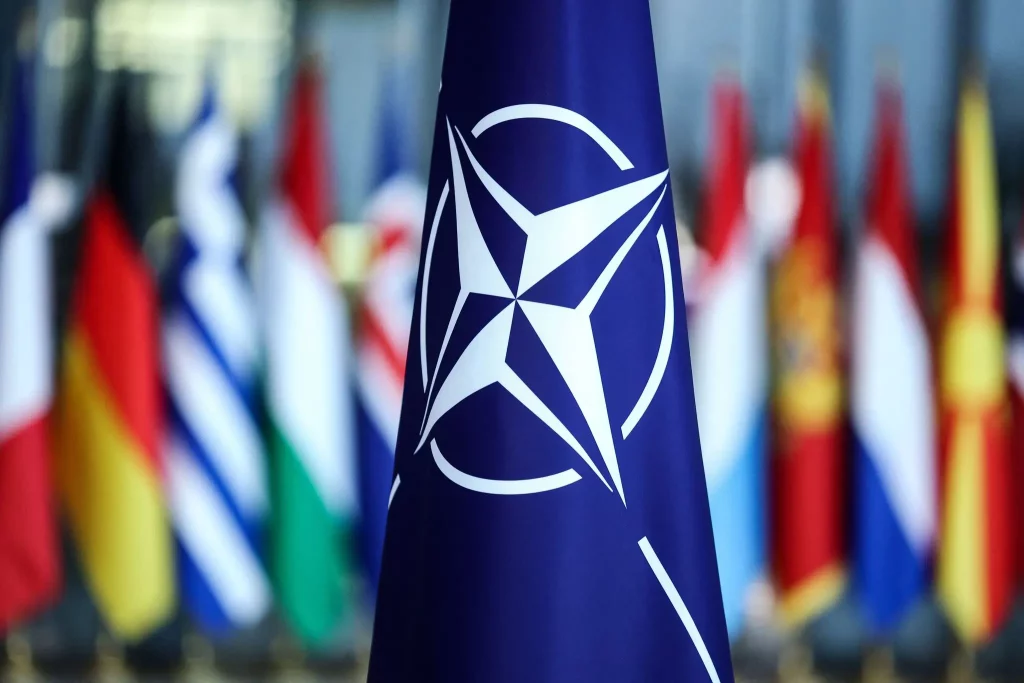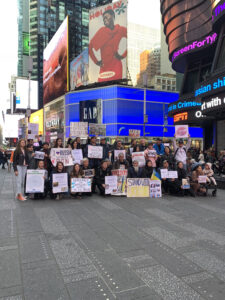Is the US’s Expansion of NATO To Blame for the Ukraine Crisis?
With the ongoing Russian invasion of Ukraine, there has been speculation as to how the United States, the de facto leader of the world, allowed this to happen, resulting in heavy scrutiny of US interventionism in the former Soviet sphere.

Image Credit: Kenzo Tribouillard/Agence France-Presse – Getty Images
Nowadays, it is nearly impossible to go on any news outlet without seeing Russia in the headlines. Throughout the 21st century, the country has created a reputation for itself as a major authoritarian superpower due to its aggressive military tactics. With the ongoing Russian invasion of Ukraine, there has been speculation as to how the United States, the de facto leader of the world, allowed this to happen, resulting in heavy scrutiny of US interventionism in the former Soviet sphere.
Analyses and critiques of situations like the one in Ukraine are essential as they provide valuable feedback and potential strategic frameworks for the future. The renowned IR realist John Mearsheimer has contended for years that the US instigated Putin’s aggression by pursuing eastward expansion of NATO and establishing friendly ties with post-Soviet nations like Ukraine. However, theoreticians and academics alike often release publications that omit significant historical context in their analysis, making it appear as if contemporary crises were the result of careless strategizing that could have been avoided. For instance, Mearsheimer argues that “the United States and its European allies share most of the responsibility for the crisis” by impelling liberal ideals of democracy and economic interdependence into Russia’s dominion without considering the impact of the Visegrad group — an alliance consisting of former satellite states (Czech Republic, Slovakia, Hungary, and Poland) that pushed for integration into Western Europe, deeming it as the “only viable anchor for a new European security system” against future Russian aggression. Researcher and writer Peng Chengyi similarly remarks that the West “proved unable to take Russia’s strategic interests into serious consideration.” Though the author acknowledges how Russia’s weakened state prevented it from countering NATO expansion, the article does not appreciate just how deplorable conditions were following the Soviet collapse of 1991. As journalist Leonid Ragozin succinctly summarizes in his op-ed, “[Russia] was a basket case with a poverty-stricken population, decrepit infrastructure and a very real risk of famine. Worse than that, looming on the horizon was a civil war … with nuclear weapons available to the potential warring sides.”
Admittedly, the US expansion of NATO should have been handled more cautiously. But when historical context is brought into the equation, the reasoning behind NATO’s eastward expansion can be understood as less impetuous and more rational. Let’s take it back to the beginning – December 1991. The Soviet Union just collapsed, and the US has come out of the Cold War as the world’s remaining superpower. The cracks in its ideological foundation developed long before the Soviet’s eventual demise. During his tenure, the Soviet leader Mikhail Gorbachev attempted to revolutionize the country by implementing democratic reform and decentralizing the country’s economy. Ultimately, these measures proved to be detrimental as they fueled national separatists, profiteers, and stymied any modicum of financial stability. The foundation eventually caved in, giving way to Russia’s first elected head of state, Boris Yeltsin, and dissolution of the USSR.
Soviet decline occurred concomitantly with the push for democratic reform, as newly independent countries within the former Communist Bloc began transitioning towards democracy. The fall of oppressive regimes and a liberated Europe brought with it a palpable feeling of optimism (it bears mentioning that the 1990s is often referred to as “the decade of optimism”). This effervescence emerged on the political landscape as well — President George H.W. Bush was credited with the peaceful end of the Cold War, and the political philosophy of Francis Fukuyama, author of “The End of History and the Last Man” dominated international relations. According to Fukuyama, the end of the Cold War marked the end of ideological conflict “with the unchallenged establishment of Western liberal democracy as the final ideological stage of human evolution.” Basically, the end game for human evolution was democracy, and the world had finally begun the democratization process. Phenomena such as the collapse of the Soviet Union, the fall of the Berlin Wall, and former Soviet nations pursuing democracy offered credence to Fukuyama’s theory. Most important of all, Russia was viewed as a weak state crippled by the economic losses and political upheaval caused by the Soviet Union. Thus, the chances of a powerful Communist state like Russia reemerging and disrupting the process of global democratization were inconceivable.
However, even with this abundance of confidence that the world was democratizing, US leaders and policy analysts had their own concerns with NATO’s expansion and were cognizant of the fact that Russia would feel threatened by it. Therefore, policymakers created the Partnership for Peace (PfP) framework in which new allies could gain contingent memberships in phases. The PfP would allow “non-NATO European and post-Soviet states to affiliate themselves with the alliance.” Over time, and with proper training, PfP members could join the NATO alliance permanently, with each nation progressing at its own pace. The PfP framework had other benefits as well. It would not create an immediate division between states with Article 5 protection and those without, and it would even give Russia the opportunity to join the alliance. Leaders from both the US and post-Soviet nations saw the advantages behind this framework, and for some time PfP showed promise.
But then reality kicked in. Several years after he secured the presidential seat, President Yeltsin began a campaign in which he brutally eliminated his opponents in Moscow and Chechnya through bloodshed. Originally an ally of the national independence movement in the Baltic region, Yeltsin’s impetuous crackdown raised alarm bells and awoke democratic dreamers from their slumber. For post-Soviet nations that were still recovering from the horrors of the Soviet Union’s authoritarian rule, NATO’s Article 5 protection was needed now more than ever. Although some opposed extending NATO for fear that it would prompt Russian aggression (and granting Article 5 meant that the US would be treaty-bound to defend these post-Soviet nations), the general consensus in the US was that democratic stability in Europe could be ensured, and authoritarian backsliding thwarted, through NATO expansion. Thus, proponents of NATO’s expansion could not see the reason for any more delay, thereby scrapping PfP and engaging in full-blown expansion. This mid-decade strategic shift from gradual to rapid NATO expansion became evident during President Clinton’s 1995 Cleveland speech in which he described NATO expansion as “inevitable”: “The questions concerning NATO expansion are not whether NATO will expand, not if NATO will expand, but when and how.” That same year, the State Department forwarded a text to the US Mission to NATO. In the text, the State Department declared that security should be made equal for all US allies and that contingent partnerships (i.e., PfP) should no longer be pursued. This strategic shift would later prove to have tremendous consequences. As George Kennan, founder of the groundbreaking Cold War containment strategy, meticulously predicted in 1998: “I think it is the beginning of a new cold war … I think the Russians will gradually react quite adversely and it will affect their policies.”
Ultimately, America is culpable to some extent in worsening its relationship with Russia through its accelerated extension of NATO. Even in more recent times, US leaders have acted in provocative ways against Russian President Vladimir Putin. The Obama administration’s support of demonstrators in overthrowing Ukraine’s pro–Russian president, and Biden’s inability to make concessions on NATO’s growing military presence in Eastern Europe, arguably provided Putin with the vindication needed to authorize military buildup on Ukraine’s border. But historical context reminds us that policymaking is difficult and results are unpredictable. From geopolitical tension to differences in prioritization and, most important of all, the challenges that come from living in a capricious world, it seems as if there is never a right solution. Of course, we should continue to scrutinize policies and strategies made by those in power, as this is how we improve and learn. But it bears reminding — hindsight is always 20/20.
Melissa Sukniqi (she/her) is a second-year MA student in NYU’s International Relations department. She received her BA in Jurisprudence from Montclair State University in 2017, where she also minored in Political Science and Sociology. Following graduation, she worked for several years as a paralegal assisting claimants in filing with the 9/11 Victim Compensation Fund Program. Her academic interests primarily concern US Foreign Policy. Outside of school, Melissa enjoys reading, playing video games, and spending time with her Shih Tzu, Tobi.







Good article Melissa.
I really enjoyed this analysis!